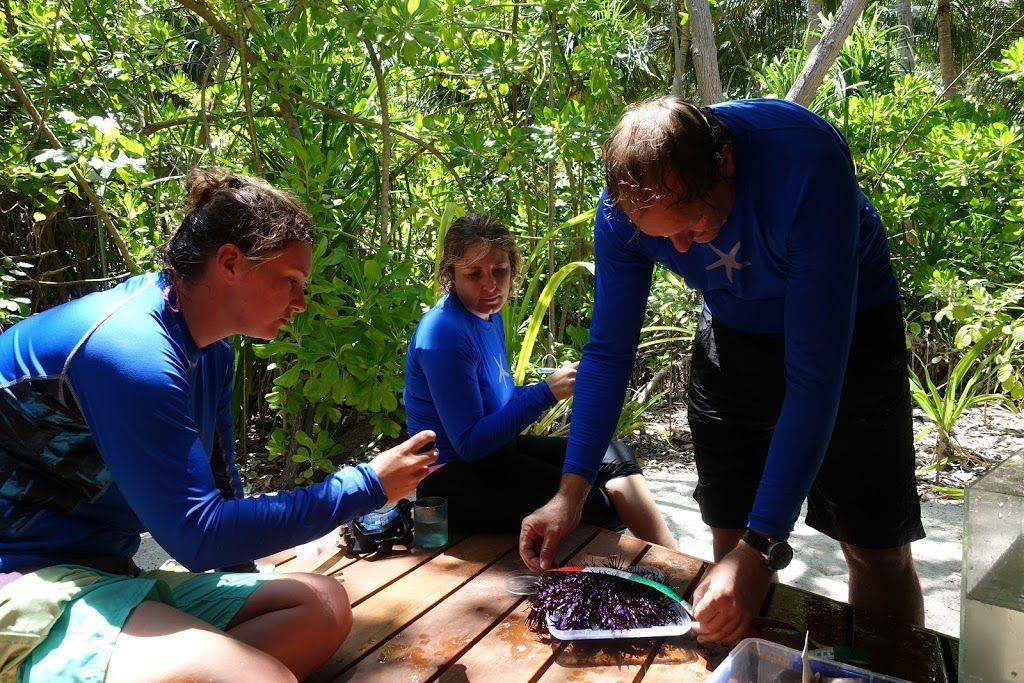The team carried out an initial study in the Maldives in 2016 and then returned to the same sites in 2017 in order to carefully assess any changes in their original findings. On Gili Lankanfushi’s house reef, the team carried out line surveys at five and ten metres along the drop off and found that after the bleaching, coral cover has dropped at both sites. This low coral cover is predominantly due to the ocean warming event in addition to COTS predation. Yet, in comparison with other study sites, Gili Lankanfushi had a higher number of coral recruits than expected which means new coral is beginning to grow again on the shallow section of our reef. This results from the hard work of Gili’s Team to remove COTS.
Morgan collected data on COTS around the resort. Despite their beautiful appearance, COTS are far less captivating once you understand the threat they pose to a struggling reef. They eat the remaining hard corals and new coral recruits. Over the past year, their population has spiked into an ‘outbreak’ therefore they have to be removed from the reef and our team works tirelessly to find each individual. Morgan brought COTS to Gili Veshi, our Marine Biology Lab, to teach us techniques on how to better understand these starfish. By dissecting individuals Morgan was able to show our team the interior of each specimen and explain if the animal was well fed or reproductive. We were able to highlight certain features under the microscope. We found the starfish living on our house reef were starving and not yet reproducing which leads us to believe the outbreak is over.
The aim of monitoring our house reef over time is to predict and track recovery of different species. We are extremely grateful for the knowledge shared by Chiara, Morgan and Deborah hope they can visit the resort again in 2018 to assess how much our reef has recovered. We look forward to their return.







